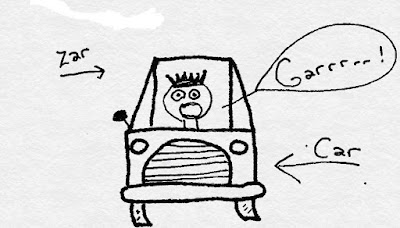Here are 12 Spanish verbs that have an irregular stem in the Spanish future tense. That means the stem is weird but the ending is the same as the normal future tense verbs.
This is an easy way to remember the list. If you can count to 12 and rhyme, you're bright enough to remember which verb is irregular.
Number
|
Rhymes With
|
Makes You Think Of…
|
Reminds You of
This Verb
|
Changes
It’s Stem To This In The Future Tense
|
One
|
Ton
|
to
know a ton
|
Saber
|
Sabr
|
Two
|
Do
|
To
do or to make
|
Hacer
|
Har
|
Three
|
Fee
|
The fee…to cost
|
Valer
|
Valdr
|
Four
|
Whore
|
Part of a whore’s job is to come
|
Venir
|
Vendr
|
Five
|
Jive
|
Jive talking, to say
|
Decir
|
Dir
|
Six
|
Dicks
|
If someone is being a dick everyone
wants to leave
|
Salir
|
Saldr
|
Seven
|
Kevin
|
I got nothing for this one….so I just
think Kevin will be there
|
Haber
|
Habr
|
Eight
|
Mate
|
A mate should be a good fit
|
Caber
|
Cabr
|
Nine
|
Dine
|
To
set the table
|
Poner
|
Pondr
|
Ten
|
Yen
|
To
want or like something
|
Querer
|
Querr
|
Eleven
|
Chevron
|
A Chevron is a kind of decoration that
some uniforms have
|
tener
|
Tendr
|
Twelve noon
|
Tune
|
To
be able to carry a tune
|
Poder
|
Podr
|







